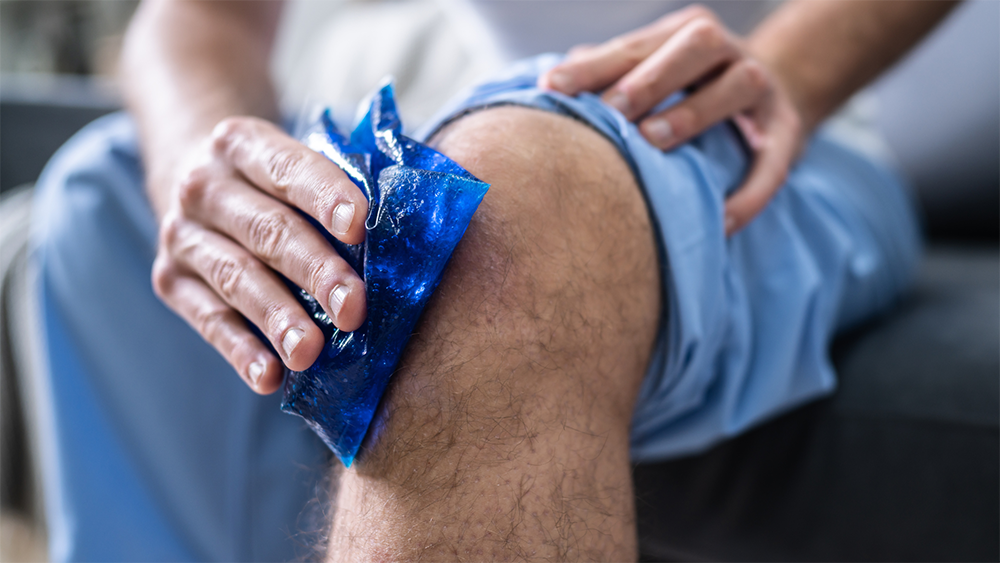In an article published this summer’s edition of Physio First ‘In Touch’ entitled “Does ice help the recovery process?” questions whether or not we should still recommend our clients to use ice post injury. In the article Solomon Abrahams (PhD MSc BSc MCSP FOIMM) Consultant Physiotherapist and BETH Sheehan BSc (Hons) FOIMM Physiotherapist analysed a total of thirty-five research papers from the last 25 years (1988-2020)
They summarised that
- Ice remains the most common treatment for acute soft tissue injuries.
- To be aware that evidence-based research on the effects of ice therapy remains poorly understood.
- Recognise that more recent research suggests ice can potentially hinder and delay the healing process.
- Be aware that ice therapy can also reduce joint position sense and neuromuscular activation.
- Understand that ice therapy can have an analgesic effect that can give the patient a false sense of security
 As a Lymphoedema therapist as well as a Physiotherapist I felt certain that compression of injuries was more important than ice because:
As a Lymphoedema therapist as well as a Physiotherapist I felt certain that compression of injuries was more important than ice because:
- To prevent secondary tissue damage (as the new injury starts to swell the swelling squashing other tissues – compressing them and thus damaging them causing further swelling)
- The clients to who we apply compression immediately feel better. Their injured ‘part’, more protected and stable.
At Atherton Physio we advise our clients ASAP applying compression to stop this from happening. We also believe that recovery time is lessened dramatically. Consequently, rehabilitation is much quicker. So, the cost of our help to you reduced!
Now let me be clear – the article does focus on recovery but there is a mention in a few of the articles about pain relief. A couple of the articles found that ice can help reduce pain after surgery and one article noted that less pain medication was used in the group that used ice post-surgery.
However, more worryingly, other recent studies have noted that the ice reduces ‘joint position sense’ (Auley 2001), (Song el al 2016)* and another reduced reflexes and motor function (Cross et al 1996). This may result in further damage as the injured person may feel overconfident, not rest the injury adequately and consequently may re-injure the area. Also, five of the research papers showed ice alone may delay the healing process (Stone 2014; Cote et al 1988; Tseng et al 2013; Lewin 2019; Scialoia & Swartzentruber 2020)*
*References to the studies we have mentioned are shown below – look at their titles and journal sources and location – worldwide qualitative research and current.
Auley D. Ice therapy: how good is the evidence? International journal of Sports Medicine 2001; 22:379-385
Cote D., Prentice W, Hooker D, Shields E. Comparison of three treatment procedures for minimising acute ankle sprain swelling. Physical Therapy 1998;68(7):1072-1076.
Lewin E. Is it time to re-think ICE for soft tissue injuries? NewsGP, The Royal Australian College of General Practitioners 2019; www1.racgp.org.au/newsgp/clinical/is-it-time-to-rethink-ice-for-soft-tissue-injurie
Tseng C, Lee J, Tsai Y, Lee S, Kao C, Lui T, Lai C, Kuo C. Topical cooling (icing) delays recovery from eccentric exercise induced muscle damage. Strength & Conditioning Research 2013;27(5):1354-1361.
Scialoia D, Swartzendruber A. The R.I.C.E protocol is a myth: a review and recommendations. The Sport Journal 2020;30(1)1-23 htpps://thesportjournal.org/article/the-r-i-c-e-protocol-is-a-myth-a-review-and-recommendations/


Recent Comments